While a lot of people in the world are buying face masks or making some of their own to protect themselves from getting infected with the novel coronavirus, scientists have gathered their forces into making simulations to show how droplets spread after someone sneezes or coughs.
After all, “If we see a whale or dolphin blow through their blowhole, we can see the water and jump out of the way if we have to,” Marc Horner, the principal engineer for healthcare at Ansys, says. “But if someone sneezes or coughs, it happens so quickly and the droplets are so small, [the simulation gets] that mental image in your mind of how far away you need to stand so gravity has time to pull the droplets down.”
Researchers in Finland have created this video to show how coronavirus could spread from a single cough in a supermarket
Researchers from Finland have created this video simulation that shows how droplets spread after a person coughs in a supermarket. “In the 3D model, a person coughs in a corridor bounded by shelves under representative indoor ventilation airflow conditions,” the video explains.
In the video from scientists at Finland’s Aalto University, it’s shown how aerosol potentially travels in supermarkets
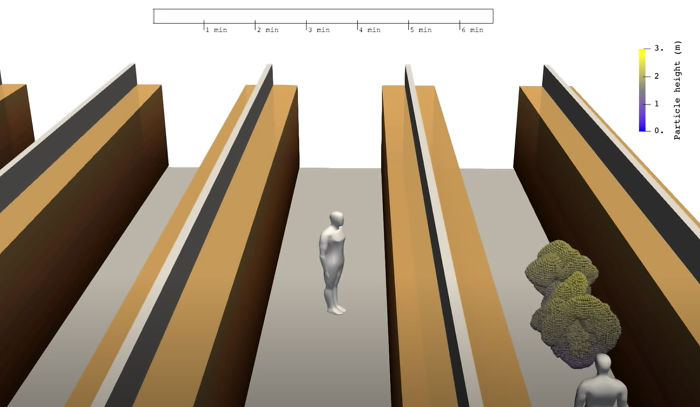
In the video, a person coughs in a corridor bounded by shelves under representative indoor ventilation conditions
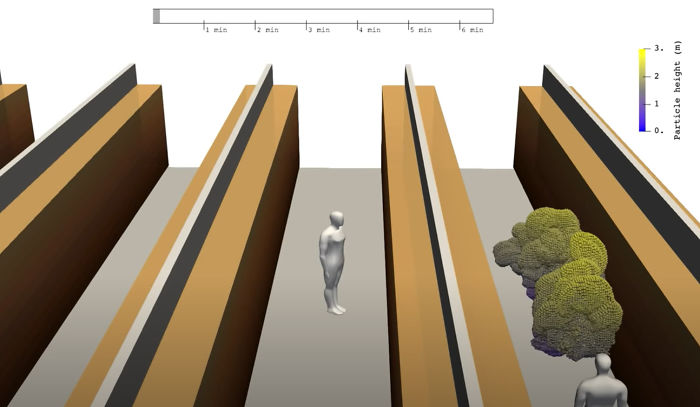
“As a result of coughing, an aerosol cloud travels in the air through the corridor. It takes up to several minutes for the cloud to spread and disperse,” it is explained in the video.
“As a result of coughing, an aerosol cloud travels in the air through the corridor,” the video explains
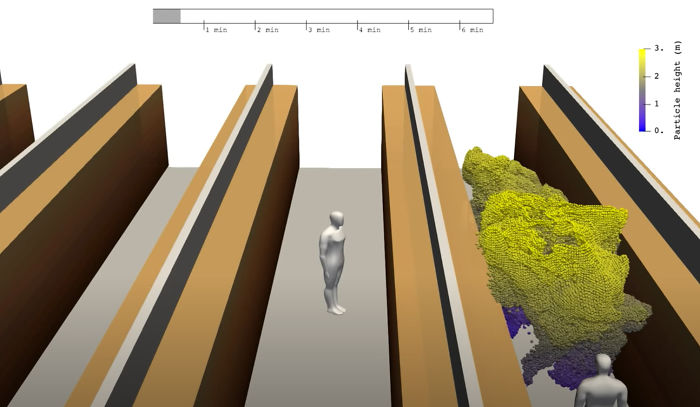
Preliminary results indicate that aerosol particles carrying the virus can remain in the air longer than was originally thought

“Preliminary results indicate that aerosol particles carrying the virus can remain in the air longer than was originally thought, so it is important to avoid busy public indoor spaces,” the researchers explain in a statement. “This also reduces the risk of droplet infection, which remains the main path of transmission for coronavirus.”
Therefore, scientists released a statement saying it is important to avoid busy public indoor spaces

Scientists explain that this way, the risk of droplet infection would be reduced greatly
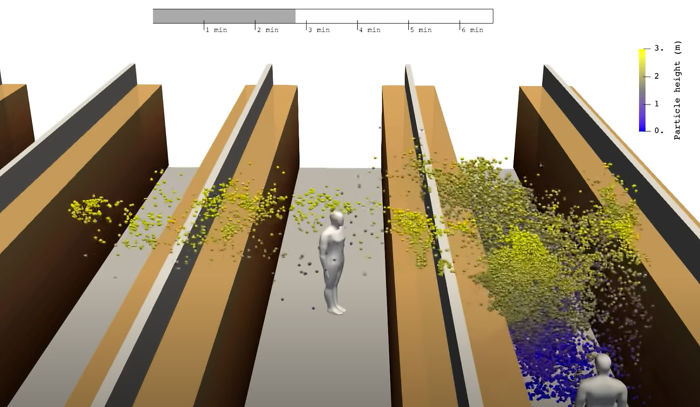
Another study by Professor Bert Blocken and Fabio Malizia from KU Leuven & Technology University Eindhoven showcases the dangers of doing outdoor physical activities such as walking, jogging, or cycling and explains how to best avoid risk while doing them.
Droplet infection still remains the main path of transmission for coronavirus

Professor Bert Blocken and Fabio Malizia from KU Leuven & Technology University Eindhoven also drew people’s attention to the risk of getting infected while jogging

Image credits: ansys
Their research shows that droplets can spread more than six feet behind you when walking, cycling, or running. Therefore, it is actually less dangerous to walk or jog side-by-side with someone than behind them. When running side-by-side, you avoid coming into direct contact with droplets from their breath or after they cough or sneeze.
This is shown in a simulation created by technology company Ansys
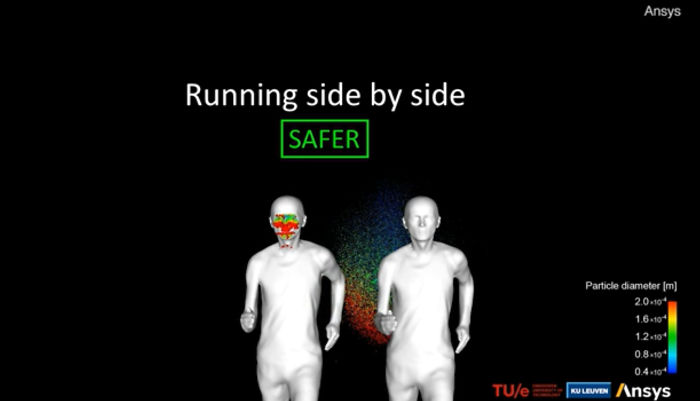
Image credits: ansys
Therefore, it’s actually safer to run side-by-side with someone and thus avoid direct contact with droplets from their breath

Image credits: ansys
“If we see a whale or dolphin blow through their blowhole, we can see the water and jump out of the way if we have to,” Marc Horner, the principal engineer for healthcare at Ansys explained to DailyMail.
In the scenario when one person jogs behind the other, droplets are being spread directly onto the person, putting them at higher risk of getting infected than while running side-by-side

Image credits: ansys
That way, you avoid direct contact with droplets from their breath
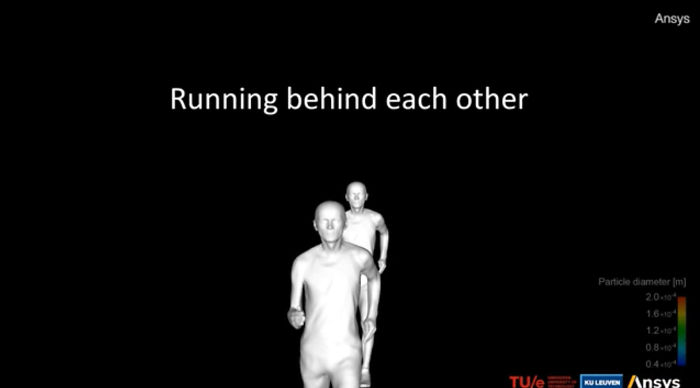
Image credits: ansys
“But if someone sneezes or coughs, it happens so quickly and the droplets are so small, [the simulation gets] that mental image in your mind of how far away you need to stand so gravity has time to pull the droplets down.”
Marc Horner, the principal engineer for healthcare at Ansys, explained that if we see a whale blow through their blowhole, we can get away if we have to

Image credits: ansys
Because the water coming out is clearly visible, unlike tiny droplets after someone coughs or sneezes

Image credits: ansys
“If someone coughs, those droplets are suspended in the air and, if you are six feet behind, you are going to run right into them and it doesn’t give them enough time to fall to the ground,” he said. “The droplets go straight out and go behind you so if you’re next to someone—ignoring wind conditions—it won’t hit you.”
He says the simulation helps one get a mental image of how far away you need to stand to stay out of the risk zone
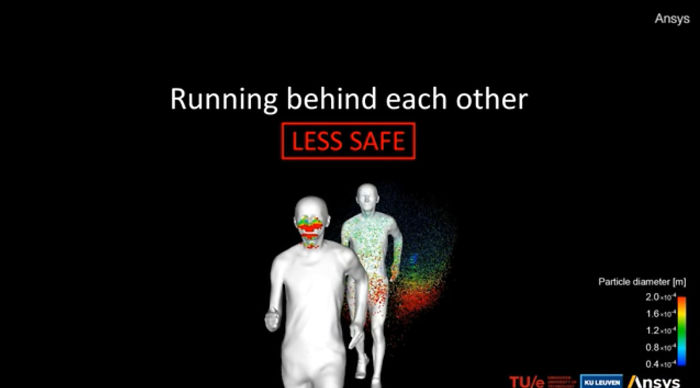
Image credits: ansys
In order for the droplets not to hit you, you can also run in a staggering formation

Image credits: ansys
He also says you could run in a staggered formation to lower the risk of getting infected. This way you avoid cough or sneeze droplets landing directly on you, therefore remaining relatively safe even while running behind someone.
Otherwise, if you’re running behind someone, the droplets after they cough will stay suspended in the air and you are going to run right into them
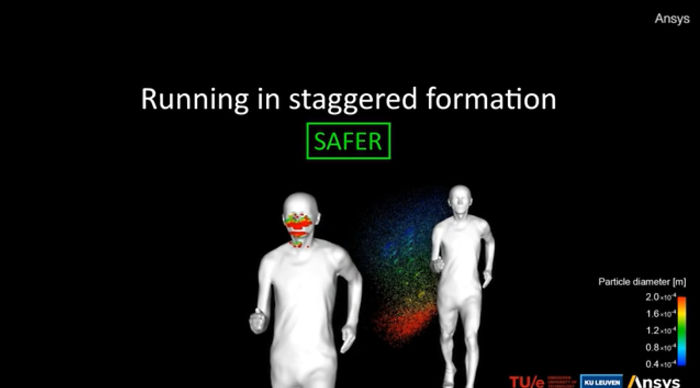
Image credits: ansys
from Bored Panda https://bit.ly/2wt1hda
via Boredpanda